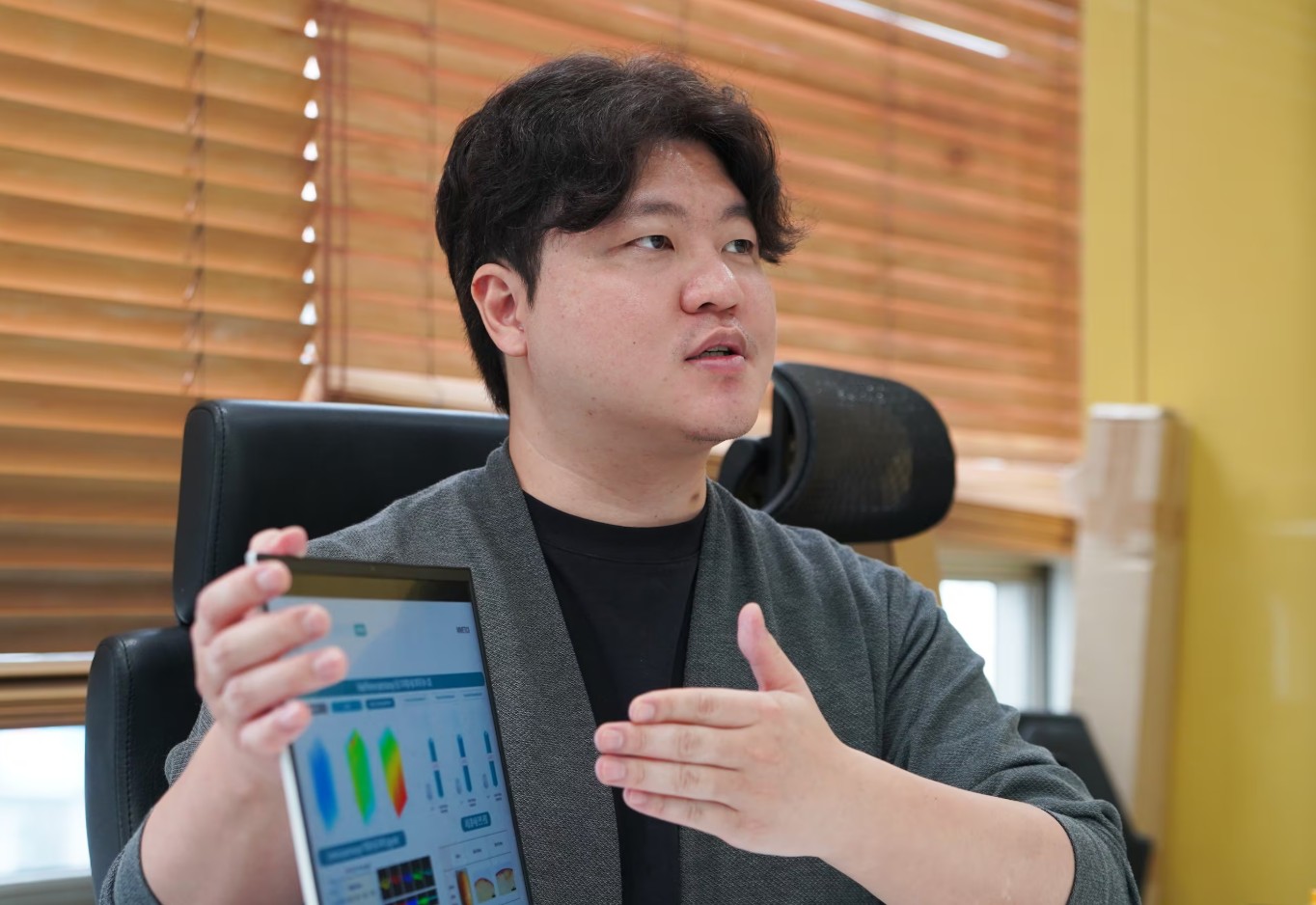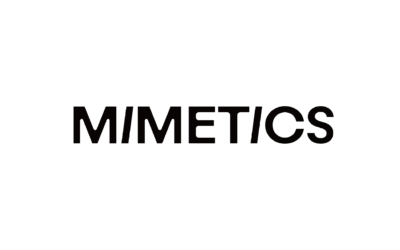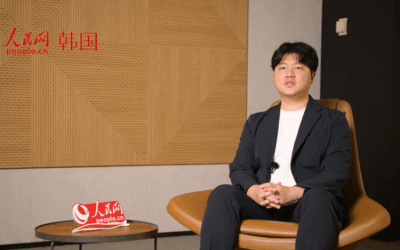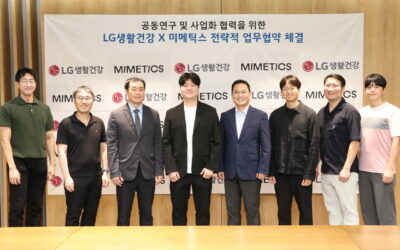K-Beauty is experiencing rapid growth.
According to data released by the Ministry of Food and Drug Safety, South Korea’s cosmetics exports in 2024 reached $10.2 billion (approximately 12.3 trillion won), a 20.6% increase from the previous year.
Consumers always expect new products, which is why the beauty device market is gaining attention. Mimetics CEO Park Hyung-ki (34), whose startup specializes in biomimetic technology, has also jumped into developing a beauty device.
This device requires no electricity or batteries. With just its patch-like form, which mimics the shape of an octopus sucker, it has attracted interest from not only domestic and international cosmetics companies but also pharmaceutical firms.
We met with CEO Park to hear about the next growth driver for K-Beauty.
The new dream of a boy who once aspired to a Nobel Prize.
/The Vivid
I spent my childhood in Jecheon, Chungcheongbuk-do. “Kids these days dream of becoming YouTubers or influencers, right? But ever since I was in elementary school, my only dream was to win a Nobel Prize. It was a vague idea back then. I was just an ordinary kid who ran around in fields, climbed trees, and observed insects. That dream didn’t change even after I became an adult. When I entered the Department of Bionano at Gachon University in 2010, I vowed to become a nano-expert and win the Nobel Prize.”
I started living in a lab with graduate students from my freshman year. “Even during breaks, I would go to the lab every day to do research on creating an E. coli sensor. In my third and fourth years, I did six-month internships at KAIST and GIST.” After graduating, I pursued a master’s degree in Materials Science and Engineering at Yonsei University. However, a slump set in while I was continuing my Ph.D. program at GIST. To overcome this crisis, I decided to move to the industrial sector. I wanted to see how the theories I learned in the lab could become a reality.

/Official website of Professor Bang Chang-hyun
In 2019, I joined a medical device manufacturer for dentistry as a researcher. “I was researching resin, a material used to fill decayed teeth. Since everyone’s tooth color is different, I suggested using my expertise to create a chameleon skin-mimicking resin. My idea was rejected every time. Looking back now, it was far too big a project for a second-year senior staff member to handle. At the time, I couldn’t understand why they wouldn’t develop such a good idea. That’s when the idea of starting my own business came to me. However, the thought of doing it alone was daunting. I decided to join a professor’s lab that specializes in biomimetics and complete my Ph.D. while also solidifying my current idea.”
I sent emails to ten of the most renowned professors in the country who specialize in biomimetics. I made it clear from the beginning that I wanted to pursue a Ph.D. while simultaneously commercializing a business. “The only person who extended a hand was Professor Bang Chang-hyun of Sungkyunkwan University’s Department of Chemical Engineering. He happened to be planning to commercialize an adhesive patch with an octopus sucker structure that he was already researching. The research was aimed at replacing traditional chemical adhesives with physical ones, leveraging the patch’s ability to stick to any surface, even underwater. The related paper was even featured on the cover of Nature magazine in 2017.”
Octopus Sucker Boosts Cosmetic Absorption by 5x
/The Vivid
In July 2022, during my second year of my Ph.D. program, I founded a company called ‘Unicorns’. “At that time, I was confident in my product, a resin that mimics chameleon skin tissue, but I wasn’t confident in the market. The medical industry has a long approval process, and doctors tend to be conservative about new technologies. Instead, I decided to leverage Professor Bang’s octopus mimicry technology. I persuaded the professor to transfer the technology rights from the university and also changed the company’s name. I took only ‘Mimetics’ from ‘Bio Mimetics’, which means biomimicry.”
I expanded Professor Bang’s research into the beauty market. “After attaching and removing the octopus-sucker-structured adhesive patch from my skin, there was a slightly reddish, swollen mark. I hypothesized that if a functional cosmetic was applied, it would be well absorbed as the capillaries would expand and the skin would open up. My hypothesis turned out to be valid. The principle is simple: it’s the same method used to attach a rubber suction cup to a bathroom mirror using negative pressure. Based on this principle, I named the octopus-sucker-structured adhesive patch ‘Micro-vacuum.’“

/Provided by CEO Park Hyung-ki
We conducted human-based trials twice, in 2024 and 2025. “We compared simply applying cosmetics to the skin, using a micro patch or microneedles (a drug delivery technology known as a ‘stick-on syringe’), and using our Micro-vacuum patch. We confirmed the amount and depth of cosmetic absorption, as well as the absorption rate we estimated from that data. Although there were differences depending on the ingredient, our Micro-vacuum was found to have an absorption rate 5 to 7 times higher than the control group on average.”
To ensure cross-validation, we participated in open innovation with cosmetics manufacturers and pharmaceutical companies. In the process, we confirmed that our technology is useful not only for cosmetics but also for delivering atopy medication. In doing so, we also confirmed its potential for use as a medium for transdermal drug delivery. “Even though the verification process was demanding, we chose to collaborate primarily with major corporations. This was because we were confident in our technology and believed it would help expand our subsequent clientele.”

/Provided by CEO Park Hyung-ki
Open innovation is not just a one-time event; it can also be the seed of new opportunities. In January 2025, Mimetics was selected to participate in the open innovation program of Medytox, a bio-pharmaceutical company. The program is hosted by Seoul BioHub, a bio and medical startup innovation platform.
“This opportunity allowed us to move into Seoul BioHub’s shared research facilities and continue our research using state-of-the-art equipment. We also received significant assistance in entering the Japanese market. Startups can often lack recognition and trust in the global market, but thanks to Seoul BioHub’s role as an intermediary, our collaboration with a Japanese company became much smoother.”
The Emergence of a New Beauty Category

/Provided by CEO Park Hyung-ki
In April 2025, in collaboration with LG H&H’s cosmetics brand The History of Whoo, we first introduced the Micro-vacuum to the market.
“We held a promotion where customers who purchased ‘Bicheop Ja Saeng Essence’ also received the Micro-vacuum (a skin activator patch) as a gift. We wanted to see the market’s reaction, so we let about 10,000 consumers try it out. We are currently in discussions for a second production run. In addition, we are receiving collaboration offers from leading beauty brands both at home and abroad.”
/The Vivid
The cushion foundation originated with the Air Cushion, which was the world’s first to be developed by a South Korean cosmetics company in 2008. Its convenience quickly gained immense popularity, leading to similar products flooding the market both at home and abroad, and it has since established itself as its own category.
“Our goal is for the Micro-vacuum to also become a category of its own. It’s no exaggeration to say that the recent beauty market has been dominated by home devices, and now is the time for a new device. The Micro-vacuum has value as a standalone product, but you can expect even greater results when it’s used in combination with functions like high-frequency, LED, and vibration.”
“In ten years, having a Micro-vacuum on your dressing table will feel completely natural.”




